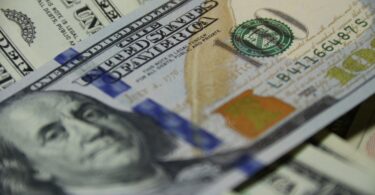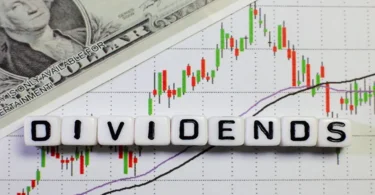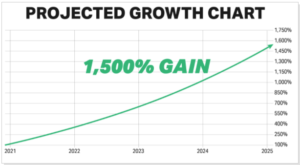7 High Yield ETFs Paying Up To 12% Yields
Sponsored
Have you seen this strange oil investment? It's NOT a stock, bond, or private company… It has NO age requirements… You do NOT need to be accredited to participate… And you can get in for as little as $25. Yet this secret is so powerful that one man used it to build a $100,000 income stream from just $1,000. And he was collecting this income even 50 years later! That's like earning a 10,000% dividend year after year! In short… This is easily the #1 Oil Play for 2023 and beyond. My short presentation reveals everything. Get the Details of This Special Income Play Here.
by Jeff Reeves
Earlier in December, the U.S. Federal Reserve left key interest rates unchanged at a range of 5.25% to 5.5%. That was good news for borrowers who have been increasingly under pressure in the last year as the cost of loans has crept steadily higher alongside interest rates, and the stock market has been rising nicely as a result of this optimism.
But one part of the economy that has been pretty pleased by the recent ramp-up in rates – and may have actually been fine with another boost – has been the fixed-income market. Rising rates mean rising returns for interest-bearing assets including bonds, specialized investment funds and other investments. This has created some of the best yields across these assets since before the financial crisis of 2008.
It hasn't been easy to be a dividend-oriented investor in recent years. But nowadays, if you're looking for income you can get much more than just the paltry 1.5% that's offered by the typical S&P 500 stock at present. The following seven picks are among the best high-dividend ETFs to buy now, based on both their current yield:
VanEck Mortgage REIT Income ETF (MORT)
- Assets under management (AUM): $250 million
- Expense ratio: 0.43%, or $43 per year on every $10,000 invested
- Dividend yield: 12.3%
This ETF is focused on the highest-yielding stocks in the real estate sector, namely companies that don't own property directly but invest in mortgage paper instead. This model comes with more risk because it doesn't have physical assets to fall back on, but also because it requires “leverage” to work – that is, borrowing aggressively with the hope of generating a bigger rate of return than what you owe on your debts. While the fund has been volatile across 2023, it is on pace to finish the year in the black with roughly 5% returns – but more importantly, a double-digit yield generated by a focused portfolio of about 25 high-yield real estate stocks.
iShares International Select Dividend ETF (IDV)
- AUM: $4.3 billion
- Expense ratio: 0.51%
- Dividend yield: 6.2%
International companies sometimes pay more generous dividends than domestic companies, but can be a hassle to research and often pay their dividends semiannually – or even only once per year. If these frictions from investing overseas have turned you off global dividend stocks in the past, consider IDV, which provides strong income potential without the hassle of managing individual positions in international stocks or dealing with the odd payment schedule. This dividend ETF's 100-stock portfolio includes mega-miner Rio Tinto PLC (RIO), Italian energy giant Eni S.p.A. (E) and British American Tobacco PLC (BTI), to name a few. These established large-cap income players are similar to U.S. blue-chip stocks, even if they're less familiar, and offer a great way to access high dividend investments that pay more than the typical S&P 500 component.
Global X SuperDividend ETF (SDIV)
- AUM: $770 million
- Expense ratio: 0.58%
- Dividend yield: 11%
Real estate stocks and international picks alike both make an appearance again in SDIV, which looks to cover all corners of the market that provide above-average yield. That said, don't make the mistake of thinking this Global X fund is truly diversified as it is allocated to different-looking companies but investments that fundamentally all are high-risk options. About 36% of the 100 or so stocks in its portfolio are in U.S. companies right now; with about 10% apiece in Brazil and Australia, its second- and third-largest country exposures. As mentioned, the ETF is heavily weighted towards real estate in the form of real estate investment trusts, which account for about 40% of holdings. SDIV is good for aggressive investors who want a high-dividend ETF and don't really care what corner of the stock market they find that income potential.
JPMorgan Equity Premium Income ETF (JEPI)
- AUM: $30.4 billion
- Expense ratio: 0.35%
- Dividend yield: 8.7%
Thinking about income-generating stocks in a different way, this unique high-yield ETF is similar in many ways to your regular run-of-the-mill blue-chip dividend stock fund. The underlying portfolio holds about 120 of the usual suspects you'd expect to see on a list of dividend stocks, including drugmaker AbbVie Inc. (ABBV) and even some that don't pay dividends at all like Amazon.com Inc. (AMZN). But the way JEPI generates income isn't via direct dividend payments, but rather an options strategy known as “covered calls.” Basically, JEPI holds the stock then sells options on those shares to collect a premium – supercharging the dividends on those stocks, and generating regular premiums on stocks like AMZN that don't normally have any income potential. Of course, when those options are executed it caps the upside – which is why JEPI is only up by single-digits this year while the S&P 500 has been on a tear. But the strategy throws off a yield almost six times the broader S&P in the process!
iShares Preferred & Income Securities ETF (PFF)
- AUM: $13.5 billion
- Expense ratio: 0.46%
- Dividend yield: 6.8%
We've covered some of the highest-yielding ways to play common stock, but PFF is one of the most popular ways to tap into income via preferred stock. This asset is a kind of hybrid between stocks and bonds, offering the stability and income potential of conventional bond offerings of corporate debt but also a bit more risk as it isn't protected in the event of default and is second-to-last in line in the event of a liquidation, ahead of only common stock owners. Typically, preferred stock is issued by large and capital-intensive enterprises so PFF is skewed toward the financial sector, with about three-quarters of its assets tied up there. Preferred stock doesn't move as dramatically as common stock, so this fund is mostly flat on the year despite a big year for the S&P 500. But it makes up for it with yield that is more than four times that popular index.
iShares iBoxx High Yield Corporate Bond ETF (HYG)
- AUM: $19.2 billion
- Expense ratio: 0.49%
- Dividend yield: 7.5%
No list of high-yield ETFs would be complete without a fund of “high-yield bonds” – also known as junk bonds for their lack of creditworthiness. HYG leads this category when it comes to assets under management, and is made up of about 1,200 or so high-yield bonds from distressed corporations. Its holdings include second-tier telecom Dish Network Corp. (DISH) and debt-heavy air carrier American Airlines Group Inc. (AAL), among others. In order to entice lenders, these companies pay significantly higher interest levels on their debts to offset that elevated risk. If the broader economy stumbles, there's a chance the companies will take a spill – and perhaps not pay their debts. However if only a handful run into trouble, this diversified portfolio of junk bonds will muddle through as the payouts keep rolling in.
iShares J.P. Morgan USD Emerging Markets Bond ETF (EMB)
- AUM: $16.3 billion
- Expense ratio: 0.39%
- Dividend yield: 6.7%
Another corner of the bond market that can throw off higher yields thanks to higher risk profiles is emerging market bonds. EMB holds a diversified portfolio of about 600 bonds, with about 90% as sovereign debt and the other 10% in emerging market corporations. Top regions at present include Mexico and Saudi Arabia at about 6% each, with Turkey and Indonesia about 5% each. That shows how spread out this fund is across emerging market debts, which may provide some peace of mind. The massive assets under management commanded by this fund is also a sign that EMB is not a fly-by-night play on emerging markets, but rather a moderately risky but useful tool in an income-oriented portfolio.
300x better than NVIDIA?
Sponsored
You've probably read about NVIDIA's recent earnings blowout… Where it revealed that thanks to demand for AI, its future earnings will crush previous expectations. The markets reacted by sending NVIDIA's stock surging by almost 25% in a single day… An impressive feat when you consider it was already a $700+ billion stock before that surge. If you already owned NVIDIA stock before the jump – congratulations… But if you didn't, don't worry… Because I've just discovered an undercover AI stock that I believe could do 300 times better than NVIDIA. I believe this small-cap stock could deliver Huge returns in 2023 – which would be 300 times better than NVIDIA's 25% surge. So just click here to get your hands on my $3 AI Wonder Stock that could make you richer in 2023 (plus a whole lot more)…












